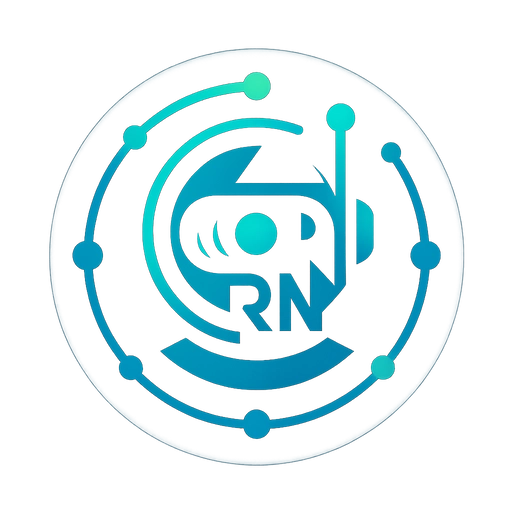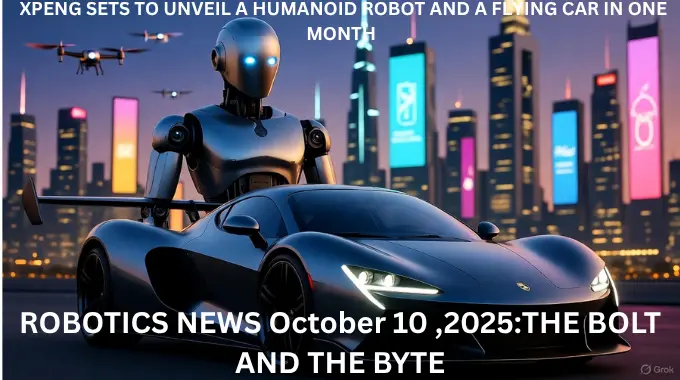Table of Contents
LEAD
The robotics world isn’t slowing down it’s sprinting. Across continents, machines are gaining limbs, licenses, and listings. Factories hum with algorithmic precision, hospitals welcome metallic assistants, and the Moon itself is preparing for its first four-legged settlers. This week’s stories capture that expanding orbit of innovation, where AI brains meet mechanical bodies, and every breakthrough hints at a world more automated and oddly more human than ever before.
Welcome to this week’s ROBOTICS NEWS October 10 ,2025:THE BOLT AND THE BYTE your curated digest of the moments when science fiction quietly becomes standard operating procedure.
1. YOUiBOT GEARS UP FOR IPO AS CHINA’S ROBOT CRAZE ACCELERATES
When Shenzhen-based Youibot announced plans for an initial public offering, few in the robotics industry were surprised. The company has spent the past few years refining mobile robots that navigate warehouses, semiconductor plants, and research facilities with a surgeon’s precision. What’s more remarkable is how Youibot’s rise mirrors a national strategy: China isn’t just adopting robots, it’s industrializing them.
Youibot’s IPO marks a symbolic milestone in China’s “robot decade.” The government has invested billions into smart manufacturing, aiming to fill factories with 500 robots for every 10,000 workers by 2027. Youibot, already a leading name in autonomous mobile robotics (AMRs), fits perfectly into that blueprint. Its machines handle material transport, inspection, and maintenance all tasks that used to require repetitive human labor.
The timing couldn’t be sharper. Global investors have shifted their gaze from humanoids to industrial robotics reliable, scalable, and revenue-ready. Youibot’s technology stack combines real-time vision, path optimization, and AI-driven scheduling that helps factories function almost like living systems. Each robot becomes a neuron in a production network, learning, adapting, and collaborating.
If the IPO succeeds, it could ignite a race among Chinese robotics firms to go public, cementing the nation’s reputation as the global center of automation. The rest of the world, from Boston to Berlin, will be watching whether Youibot’s success becomes a blueprint or a challenge.
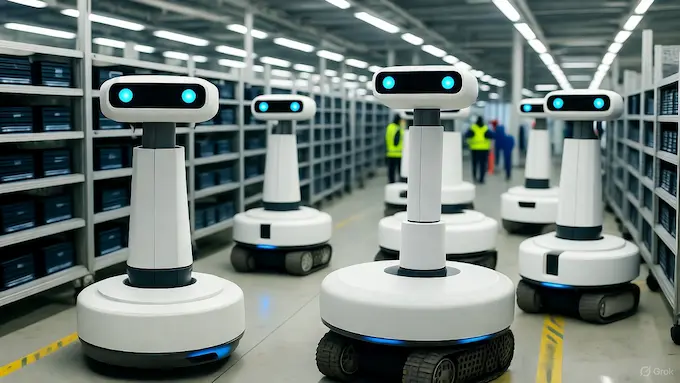
2. ENERGY ROBOTICS SECURES $13.5 MILLION TO SUPERCHARGE INSPECTION BOTS
Industrial inspections once a tedious, hazardous, and human-heavy process are being redefined by Germany’s Energy Robotics. With its recent $13.5 million Series A funding, the startup is pushing toward a future where entire facilities can be patrolled, monitored, and analyzed autonomously.
Energy Robotics specializes in field-grade inspection robots for the oil, gas, and energy sectors. Their bots roam complex industrial sites, reading meters, detecting leaks, and even recognizing unusual sounds. What sets them apart is the software ecosystem that lets one operator manage fleets of robots remotely from a single dashboard something akin to an air traffic control system for machines.
The funding, led by Future Industry Ventures and other European investors, will help scale these deployments globally. As aging infrastructure becomes harder to monitor, Energy Robotics’ approach provides a lifeline to industries under pressure to modernize safely and sustainably. The robots can handle extreme temperatures, toxic environments, and hazardous areas where human access is risky or impossible.
But beyond automation, this funding round highlights something deeper: the rise of “trustable autonomy.” Energy Robotics isn’t selling hardware alone; it’s building confidence in data accuracy, in real-time decision-making, and in the ability for AI systems to perform critical safety tasks reliably.
With climate and energy transitions accelerating, companies like Energy Robotics are quietly becoming the invisible workforce behind industrial continuity ensuring that, even when humans can’t be present, the machines still watch, listen, and respond.
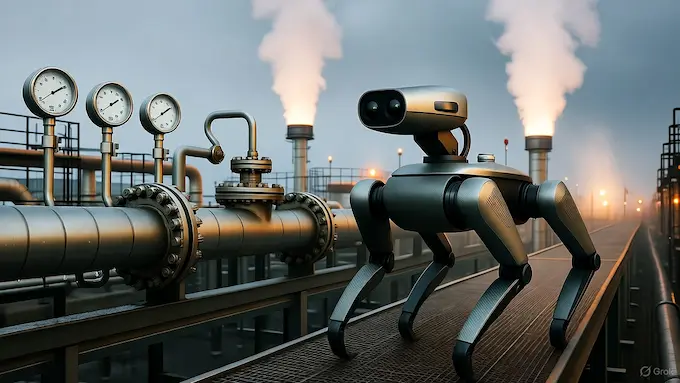
3.ZIMMER BIOMET ACQUIRES MONOGRAM TECHNOLOGIES TO REDEFINE SURGERY
The future of orthopedic surgery just got a titanium upgrade. Zimmer Biomet, one of the world’s leading medical device manufacturers, has acquired Monogram Technologies a bold startup known for fusing robotics with surgical intelligence. The goal: precision beyond human steadiness.
Monogram has built robotic systems that use AI to plan and execute joint replacements with millimeter-level accuracy. The robot models a patient’s bone structure in 3D and adjusts in real time during surgery. Zimmer Biomet’s acquisition effectively merges decades of surgical data with next-generation robotic performance.
The implications are enormous. Today, orthopedic procedures often depend on surgeon skill and endurance both human variables. Tomorrow, surgeries might combine human oversight with machine execution. Robots can replicate precision indefinitely, never tiring or deviating from the plan. That’s not just about efficiency; it’s about outcomes. Reduced recovery times, fewer errors, and patient-specific customization all come into play.
Yet, the move also raises questions about the evolving role of surgeons. Will tomorrow’s medical students train in anatomy or in robotics programming? The likely answer is both. As surgical robotics matures, humans may become conductors rather than operators, guiding the machines that perform life-changing symphonies.
Zimmer Biomet’s acquisition signals confidence that robotics in medicine has crossed from novelty to necessity a shift that will define the next decade of healthcare.
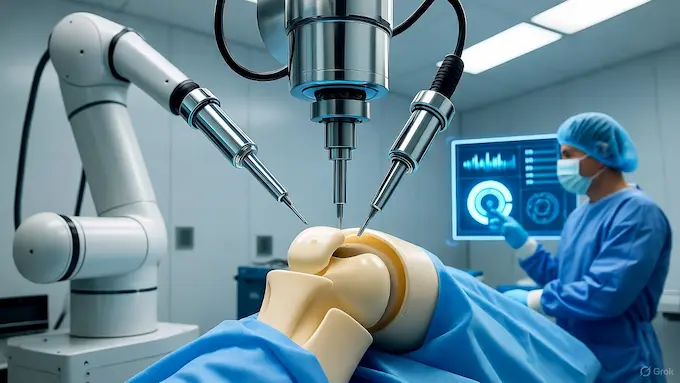
4. TESLA’S OPTIMUS PERFORMS KUNG FU, AND IT’S MORE THAN A STUNT
Elon Musk’s humanoid, Optimus, is learning martial arts and surprisingly, that’s serious business. In a video released this week, Tesla showcased its robot performing smooth kung fu routines, complete with stances, transitions, and controlled balance. The internet saw memes; MORE THAN A STUNT engineers saw milestones.
What looks like choreography is, in fact, evidence of breakthrough motor learning. Each pose, each balance shift, represents thousands of hours of motion capture, reinforcement learning, and self-correction. The result isn’t just a dancing robot; it’s a system learning human-like coordination the holy grail of humanoid robotics.
Tesla’s goal with Optimus isn’t to entertain. It’s to create a low-cost humanoid platform capable of real-world work from warehouse sorting to home assistance. The kung fu demo shows the robot’s progress in fine-grained control, crucial for tasks requiring dexterity and safety around humans.
Critics call it marketing. But consider this: martial arts training is about balance, adaptability, and response — precisely what humanoid robots need to master unpredictable environments. In that sense, Optimus isn’t showing off; it’s practicing survival.
For Tesla, every kick and turn signals a future where robots not only mimic human motion but internalize it. And when that happens, they’ll stop being novelties and start being colleagues.
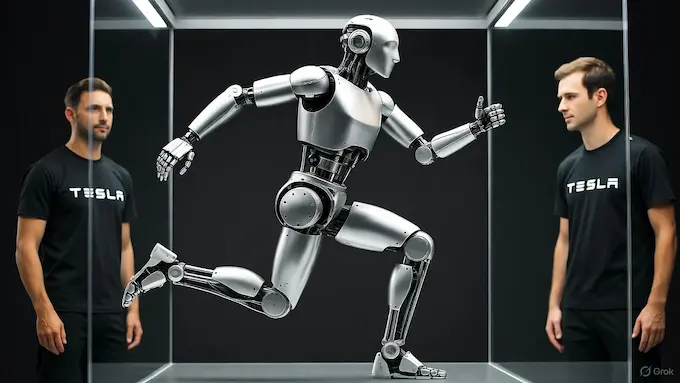
5. ROBOT DOGS TRAIN FOR LUNAR MISSIONS
If NASA’s next explorers have tails, don’t be surprised. Scientists are developing four-legged robots to help construct lunar bases and explore the Moon’s caves. Inspired by Boston Dynamics’ quadrupeds, these robotic dogs are designed to walk, climb, and dig through rugged extraterrestrial terrain.
The logic is simple: wheels get stuck, legs don’t. The Moon’s surface is unpredictable, and its lava tubes potential shelters for astronauts require agile exploration. These robots can operate autonomously for extended periods, mapping underground structures with LIDAR and ground-penetrating radar.
Researchers from ETH Zurich, the European Space Agency, and several American institutions are collaborating on prototypes capable of adaptive locomotion. Each unit is equipped with modular tools drills, cameras, and sample collectors and can communicate with orbiters for real-time data relay.
The implications reach beyond lunar missions. Techniques developed for these robots could enhance Earth-based disaster response and mining. Space robotics has always had a habit of trickling back down to our planet, reshaping industries in its wake.
So yes, they may look like mechanical pets now, but these dogs could one day lay the first foundations of a human future on another world.
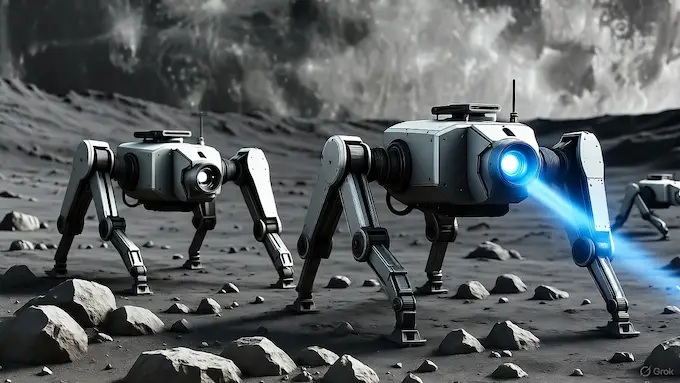
6. TEPCO’S FOUR-LEGGED ROBOT BRINGS AI TO POWER PLANT INSPECTIONS
Japan’s TEPCO subsidiary has officially deployed a four-legged inspection robot equipped with an articulated arm for use in power plants. It’s a significant first for Japan’s energy industry, long known for its careful adoption of automation.
The robot, designed for inspection and maintenance, can navigate narrow walkways, climb stairs, and manipulate valves or switches using its robotic arm. Developed with domestic robotics partners, it’s built to withstand radiation, heat, and humidity typical in older facilities.
Beyond technical novelty, this deployment represents a cultural shift. Japan’s energy infrastructure, aging and delicate, has been notoriously difficult to modernize. Robots like this enable consistent monitoring without human exposure to hazardous zones especially vital after the lessons of Fukushima.
TEPCO’s initiative may inspire other utilities across Asia to adopt legged robotics. It’s not about replacing engineers; it’s about extending their reach into environments too risky or remote. The fusion of quadruped mobility with manipulative capability marks a new chapter in applied robotics one where machines don’t just observe, but intervene.
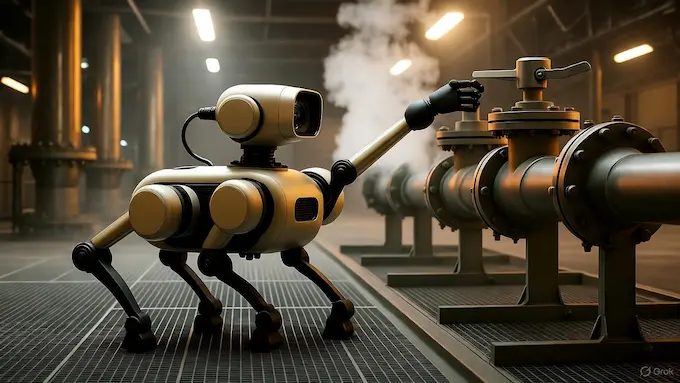
7. HUMANOIDEXO TURNS HUMAN MOTION INTO DATA THAT TEACHES ROBOTS TO WALK
Imagine if every step you take could teach a robot how to move. That’s the vision behind HumanoidExo, a startup that’s building wearable exoskeletons to capture human movement and translate it into motion-learning data for humanoid robots.
Unlike traditional motion capture suits that rely on cameras and external sensors, HumanoidExo’s exosuit uses embedded pressure and motion sensors distributed along joints and limbs. When a human walks, crouches, or reaches, the suit records subtle biomechanical data balance shifts, micro-adjustments, torque distribution creating a database of how real humans move in complex environments.
This dataset is then fed into AI training models that teach robots how to walk with natural human-like dynamics. It’s not just about gait; it’s about grace. Robots learn how to recover from slips, stabilize after turns, and adapt to new terrains the same way people do, through repetition and feedback.
The implications stretch beyond robotics labs. The same exosuit could be used in physical therapy, athletic training, or prosthetic design. But for the robotics world, HumanoidExo offers something long missing: authentic motion intelligence.
By merging biomechanics with data science, the company is essentially building a translation layer between human instinct and mechanical control. If they succeed, humanoid robots may finally move less like machines and more like us.
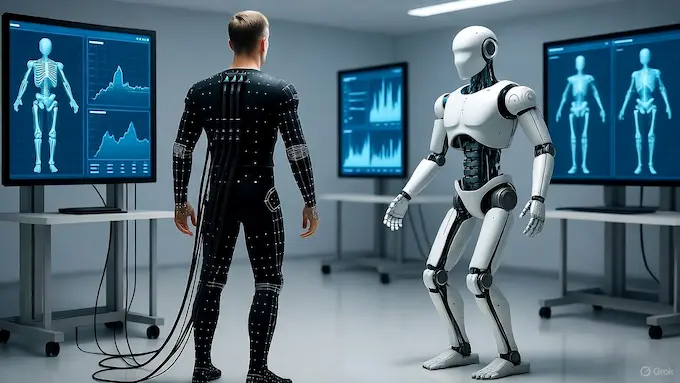
8. GOOGLE DEEPMIND DEMONSTRATES APOLLO: THE VOICE-COMMAND ROBOT THAT UNDERSTANDS YOU
Google DeepMind’s latest prototype, Apollo, might be the closest thing yet to a robot that listens and truly understands. In a series of demos this week, Apollo performed a range of household tasks entirely from spoken voice commands: tidying up a table, loading dishes, and even fetching items from another room.
Behind the scenes, this is a tour de force of embodied AI. Apollo uses a combination of large language models, multimodal perception, and reinforcement learning. When you tell it, “Clean up the table,” Apollo doesn’t just match words to actions it parses intent, identifies the relevant objects through vision, plans a sequence, and executes the task smoothly.
This fusion of voice understanding and embodied action is something robotics researchers have dreamed about for years. It means commands no longer need to be scripted; they can be conversational. Imagine telling a future home robot, “I spilled some juice,” and it not only recognizes the problem but fetches a cloth and wipes it clean.
DeepMind calls Apollo an “embodied conversational agent.” The name fits. The system marks the convergence of AI language understanding and robotics control two fields that have matured separately until now.
Apollo is still a prototype, but the implications are immediate. The day is approaching when robots can be trained not by code, but by conversation.
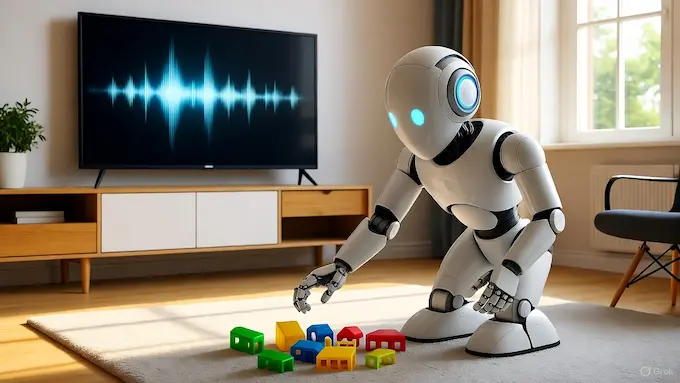
9. 7-ELEVEN JAPAN PARTNERS TO DEVELOP HUMANOID CLERKS
Japan’s retail industry is facing an unusual labor shortage and its most iconic convenience chain has a mechanical solution. 7-Eleven Japan announced a partnership with several robotics firms to develop humanoid shop assistants capable of shelf management, cleaning, and customer service.
These robots, expected to debut in pilot stores by 2026, will handle repetitive late-night tasks: restocking shelves, handling deliveries, and greeting customers with polite bows and phrases. Their design emphasizes friendliness and cultural nuance, aligning with Japan’s tradition of service etiquette.
Behind the project lies necessity. Japan’s aging population has left many convenience stores short-staffed, especially in rural areas. 7-Eleven’s humanoids are intended not to replace workers but to sustain operations where human labor simply isn’t available.
Each unit will integrate vision-based product recognition, mobility systems for narrow aisles, and natural language processing for customer interaction. The humanoids are built to operate up to 18 hours daily, with adaptive learning that refines how they handle different store layouts.
Culturally, it’s a fascinating convergence: Japan’s obsession with robotics meeting its passion for hospitality. For customers, it might mean that late-night snack run feels a little more futuristic and a lot more polite.
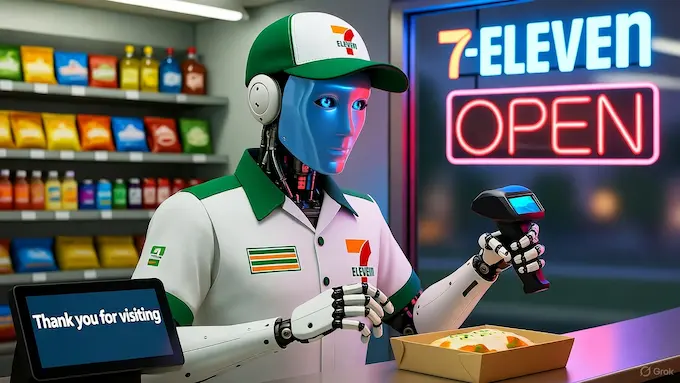
10. AI-POWERED ROBOTS INSTALL SOLAR PANELS FASTER THAN ANY HUMANS
In the renewable energy race, speed is everything and AI-powered robots are outpacing human installers. A recent report from CleanTechnica revealed that robotic systems can now deploy solar panels at nearly twice the rate of human crews while maintaining precision alignment.
These robots, developed by several startups in the U.S. and Europe, use computer vision and AI planning to navigate rooftops, handle heavy panels, and secure them autonomously. They adapt to irregular surfaces, compensate for wind or angle variations, and verify placement through onboard sensors.
Beyond efficiency, safety is a huge driver. Traditional solar installation involves significant fall and heat exposure risks. Robots don’t tire under the sun, don’t slip, and don’t suffer heatstroke. They also work continuously, extending installation hours without overtime costs.
Analysts see this as a tipping point for solar automation. As renewable infrastructure expands, robotic labor may become essential to keep up with installation demand. And for humans, the shift could move jobs from manual assembly to supervisory and technical roles from climbing ladders to commanding fleets.
It’s a vision where solar farms might one day be built by robots powered by the very energy they install.
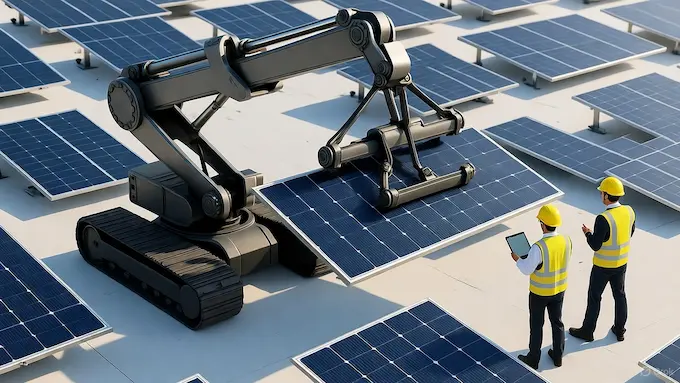
11. ARGUS ROBOT PATROLS CYBERSECURITY ON THE PHYSICAL FRONTLINES
Romania’s ARGUS robot is unlike any digital defender you’ve seen because it’s physical. Designed to patrol data centers and server rooms, this wheeled robot uses thermal imaging, motion tracking, and network sensors to detect intrusions and anomalies in real time.
Its creators call it a “cyber-physical guardian.” The system combines physical surveillance with digital diagnostics, enabling it to notice both a door left ajar and a suspicious spike in network traffic. When ARGUS detects a breach, it can isolate the affected systems, trigger alarms, and transmit evidence directly to human operators.
In an age where cyberattacks increasingly target physical infrastructure from hospitals to power grids the ARGUS concept represents a new kind of security architecture. It’s proactive, embodied, and mobile.
What makes ARGUS impressive isn’t just its detection ability but its autonomy. It navigates tight corridors, recharges itself, and maps every patrol route dynamically using SLAM (simultaneous localization and mapping). Think of it as a security guard that never blinks, never rests, and never forgets.
As AI security grows more advanced, ARGUS may lead a new category of machines: the guardians that watch both cables and corridors.
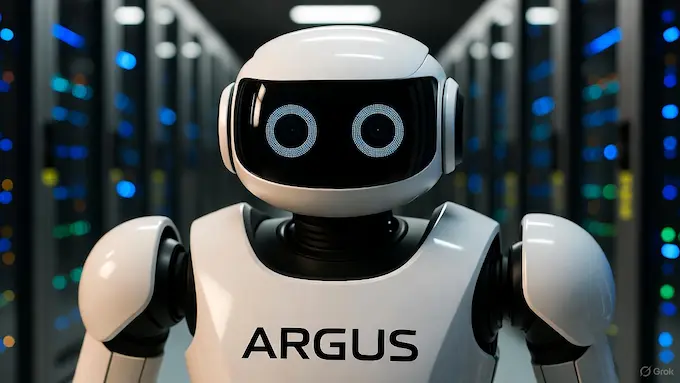
12. BOSTON MUSEUM OF SCIENCE OPENS “WORLD OF ROBOTS” EXHIBIT
If you’re in Boston, you can now shake a robot’s hand literally. The city’s Museum of Science has unveiled its new permanent exhibition, World of Robots, an immersive journey through the history, artistry, and ethics of robotics.
The exhibit features live demonstrations of humanoid, industrial, and social robots interacting with visitors. Guests can test telepresence systems, program mini-bots, and even choreograph a dance routine with mechanical companions.
But beyond the spectacle, the museum aims to inspire critical thinking. Interactive panels explore how automation reshapes society, from jobs to privacy. A dedicated section invites kids to design their own robots using modular parts, teaching both creativity and coding.
Curator Anna Hirsch calls the exhibit “a playground for the next generation of engineers.” It’s a sentiment echoed throughout: this isn’t just about watching robots; it’s about understanding the world they’re building with us.
Boston’s role in robotics innovation makes it a fitting host city home to pioneers like Boston Dynamics and iRobot, and now to a museum experience where curiosity meets circuitry.
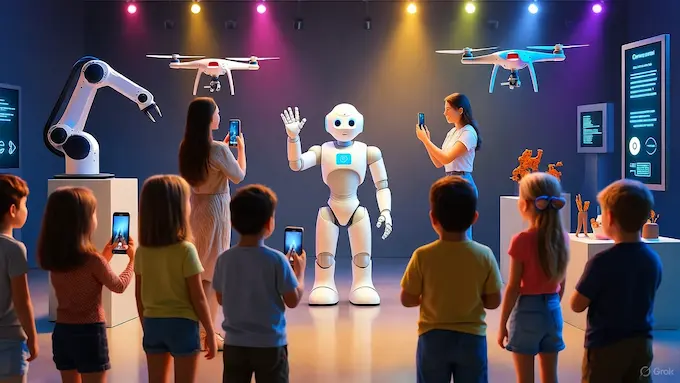
13. RENU ROBOTICS EXPANDS BEYOND MOWING INTO SMART AGRI AUTOMATION
Texas-based Renu Robotics made its name with autonomous mowers that kept solar farms trim. Now, it’s aiming higher and deeper with an upgraded platform capable of performing multiple agricultural tasks such as soil analysis, weed detection, and precision spraying.
The secret is modularity. The company’s Renubot 2.0 features interchangeable tool attachments and a sensor suite that reads soil moisture, nitrogen content, and terrain contours. The robot can map entire farms, identify problem zones, and relay data to cloud dashboards farmers can check from their phones.
CEO Tim Minsker calls it “turning the mower into a mobile agronomist.” It’s part of a broader trend toward agribots autonomous machines combining environmental awareness with AI-based decision support. The implications are vast: less chemical use, improved yield prediction, and 24-hour operation without fatigue.
In regions facing worker shortages and climate unpredictability, Renu’s evolution represents resilience by design. The company isn’t abandoning its green-energy roots; it’s expanding them from maintaining solar arrays to nurturing the crops those arrays may one day power.
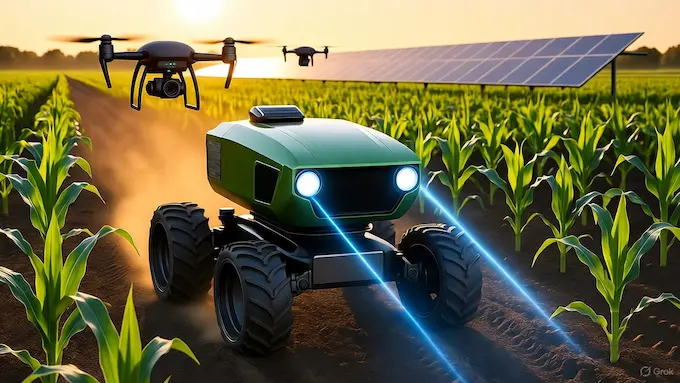
14.FIRST HUMANOID ETF TO LAUNCH IN EUROPE
Robotics has officially gone financial. A new Humanoid ETF (exchange-traded fund) launching in Europe will track companies involved in humanoid robotics, embodied AI, and advanced automation.
The fund will include familiar names Tesla, Figure AI, Agility Robotics alongside suppliers of actuators, sensors, and chipsets that enable movement and perception. Investors see it as an opportunity to capture value from a sector expected to exceed $150 billion by 2035.
This move mirrors the early days of renewable-energy ETFs, signaling institutional belief that humanoid robotics is no longer speculative. Portfolio managers describe it as “investing not in gadgets, but in the next labor revolution.”
Beyond finance, the ETF legitimizes robotics as infrastructure. It suggests that humanoids are moving from prototype to production, from novelty to necessity. And it invites anyone with a brokerage account to have literal skin in the synthetic game.
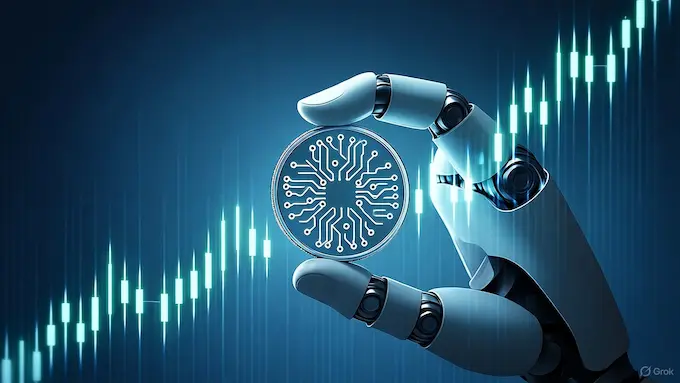
15. XPENG SETS TO UNVEIL A HUMANOID ROBOT AND A FLYING CAR IN ONE MONTH
Chinese EV maker XPeng isn’t content with roads anymore. The company announced it will debut both a humanoid robot and a flying car before the end of October a bold declaration of its intent to dominate “mobility in all dimensions.”
The humanoid, named PX-One, uses proprietary AI software derived from XPeng’s autonomous-driving stack, while the flying car, AeroHT, employs folding rotor arms and hybrid electric propulsion. Together they showcase XPeng’s transformation from automaker to integrated robotics powerhouse.
Analysts see strategic synergy: car autonomy data feeds humanoid navigation algorithms, while humanoid control tech enhances vehicle safety systems. It’s cross-pollination between two frontiers that were once separate.
For China, it’s also a national showcase. As the U.S. and Japan push their own humanoids, XPeng’s twin unveilings could position the company as a cultural symbol of Chinese innovation a blend of mobility, AI, and design daring enough to fly.
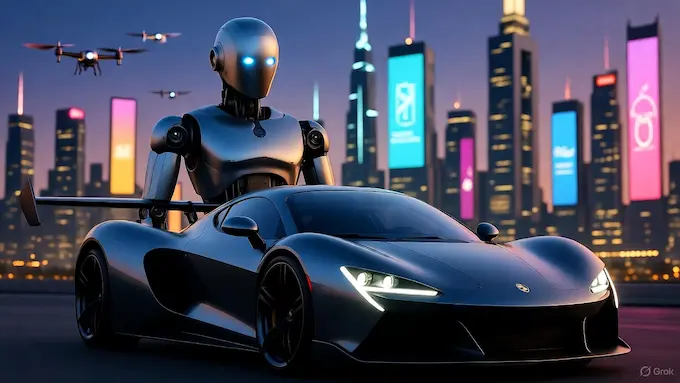
Conclusion
Across this week’s stories, one theme glows through the circuits embodiment. Whether it’s robots scaling ships, teaching themselves balance, or guiding students through VR, the line between algorithm and anatomy keeps thinning.
Robots are no longer mere tools; they’re extensions of human intention. They inspect, weld, explore, and even teach, carrying our ingenuity into places too dangerous, distant, or dull for us to go.
As we move deeper into this new mechanical century, the challenge isn’t how to build smarter robots — it’s how to build a smarter relationship with them.
Join us next week in “The Bolt and The Byte” as we track the evolving alliance between minds, machines, and the worlds they share.
Q1. What are the major highlights covered in ROBOTICS NEWS October 10, 2025: THE BOLT AND THE BYTE?
This week’s edition explores 15 groundbreaking stories, from Youibot’s IPO and Tesla’s kung-fu humanoid to XPeng’s flying car, Google DeepMind’s Apollo, and robot dogs training for lunar missions. Each story shows how robotics is reshaping industries, investment, and innovation worldwide.
Q2. Why is Youibot’s IPO featured prominently in ROBOTICS NEWS October 10, 2025: THE BOLT AND THE BYTE?
Youibot’s planned IPO marks a major milestone in China’s robotics boom, signaling investor confidence in industrial automation and the country’s broader ambition to lead the global robotics market.
Q3. How does Tesla’s Optimus fit into the broader trends discussed in ROBOTICS NEWS October 10, 2025: THE BOLT AND THE BYTE?
Tesla’s kung-fu demonstration isn’t just spectacle — it showcases the company’s progress in humanoid balance, motion learning, and fine-motor control, underscoring a shift toward functional, human-assistive robots.
Q4. What’s significant about XPeng’s humanoid robot and flying car announcement in ROBOTICS NEWS October 10, 2025: THE BOLT AND THE BYTE?
XPeng’s dual debut represents China’s next leap in multi-domain mobility, merging AI, robotics, and aeronautics. It reflects how robotics and transportation are converging into a single ecosystem of intelligent machines.
Q5. How does ROBOTICS NEWS October 10, 2025: THE BOLT AND THE BYTE address the economic impact of robotics?
This edition highlights financial milestones like Europe’s first humanoid ETF, Energy Robotics’ $13.5M raise, and corporate mergers such as Zimmer Biomet’s acquisition of Monogram — proving robotics is now both a technological and financial frontier.
Q7. How is humanoid technology evolving according to ROBOTICS NEWS October 10, 2025: THE BOLT AND THE BYTE?
HumanoidExo’s data-driven motion training, Google DeepMind’s conversational Apollo, and 7-Eleven Japan’s store clerks point toward a new phase where robots not only mimic humans but collaborate seamlessly in real-world environments.
